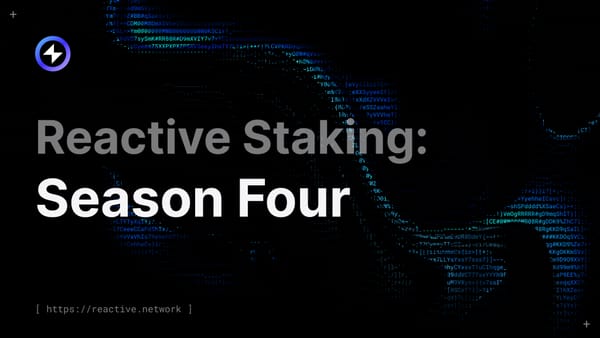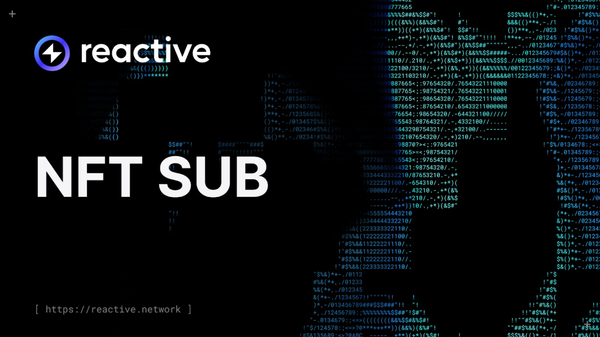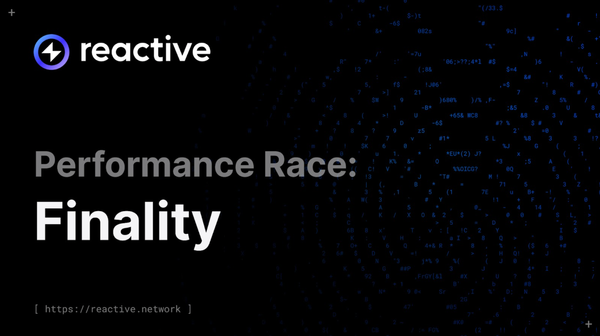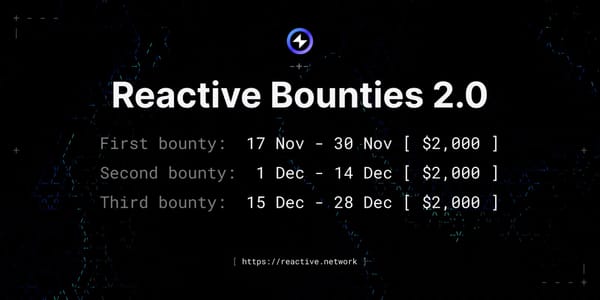PRQ to REACT Migration: Step Into the Future of Smart Contracts
With the Reactive Network mainnet launching on March 5th, 2025, PRQ holders can seamlessly migrate to REACT, the native token powering automation and staking. The transition unlocks cross-chain functionality, transaction processing, and rewards within the Reactive ecosystem.

For trading and DeFi integrations, the Wrapped REACT (ERC-20) Contract Address is: 0x817162975186d4D53dBF5a7377dd45376e2D2fc5.
Introduction
With the Reactive Network’s mainnet launching on March 5th, 2025, we’re entering an era of event-driven smart contracts and cross-chain automation. This milestone also marks the transition from PRQ to REACT, the new token powering the Reactive Network ecosystem.
REACT isn’t just a replacement – it’s the fuel for automation and cross-chain functionality. By bridging PRQ to REACT, you’ll gain native REACT for transaction fees, callbacks, and staking opportunities to earn rewards while securing the network.
Bridging Mechanism
There are two types of REACT tokens:
- Native REACT – Used for gas fees, validator staking, and event log processing.
- REACT (Ethereum) – An ERC-20 token compatible with Ethereum-based DeFi platforms, enabling easy trading on DEXs.
Supported Bridges
The Reactive Network supports the following bridging options:
- BSC PRQ → Native REACT (one-way, PRQ is burned)
- Ethereum PRQ → Native REACT (tokens are locked for future redemptions)
- Ethereum REACT → Native REACT (burn-and-mint mechanism)
- Native REACT → Ethereum PRQ
- Native REACT → Ethereum REACT
Ethereum users can swap between native REACT, Ethereum PRQ, and Ethereum REACT. However, BSC PRQ can only be converted into native REACT, with no reverse conversion.
How To Bridge
If your PRQ tokens are on a centralized exchange, some exchanges will handle your migration automatically at launch, others will continue to support PRQ initially and add support for REACT at a later date. We’ll share full details on individual exchanges as soon as possible on our social channels.
For self-custody wallets, you can bridge tokens using our official bridge interface, available starting from March 5th, 2025:
All network information and wallet setup details can be found in this document.
- Visit Token Portal.
- Connect your wallet holding PRQ tokens.
- Specify the amount to bridge.
- Important: Only enter whole numbers (e.g., 10,000 instead of 10,000.245) to avoid transaction errors.
- If you're sending native REACT, send slightly less than the maximum amount to leave enough for gas fees.
- Confirm the transaction and pay a small gas fee (ETH or BSC).
- Accept the gas fees suggested by the portal to avoid failed transactions.
- Switch your wallet network to Reactive Network to see your REACT balance.
- How to Set Up Reactive Network: Full network setup details can be found in this document.
- Many users forget this step and can’t see their tokens while still on Ethereum/BSC.
- Wait for the transaction to complete (typically 1-1.5 minutes).
- Done! You’ll receive REACT tokens in your wallet.
Important Warnings
- DO NOT send PRQ to exchanges that no longer support it for trading.
- DO NOT send REACT to exchanges that only support PRQ.
- DO NOT send native REACT to any exchange. If you need to deposit REACT to an exchange, only send REACT (ERC-20 on Ethereum) to avoid loss of funds.
Staking REACT
Staking REACT will be available on Token Portal, too. During the first epoch, a fracture of the total native REACT supply will be generated as additional rewards. A portion of these tokens will be allocated to a staking contract, from which rewards can later be claimed.
Rewards will continuously accumulate throughout the epoch, but withdrawals will be restricted until the epoch ends. Staking occurs natively on the Reactive Network: when a user deposits REACT tokens into the staking contract, the contract locks them and issues staking tokens in return.
The staking token allocation is determined by the amount of REACT contributed, multiplied by the number of blocks remaining until the end of the staking epoch. At the conclusion of the epoch, the total supply of staking REACT (i.e., total rewards) is distributed proportionally among all participants based on their staking REACT balance. Participants can then exchange their staking REACT for their earned rewards.
Conclusion
Migrating from PRQ to REACT is your gateway to the next step of decentralized automation. Whether you’re staking, covering transaction costs, or engaging in cross-chain activities, REACT is the key to unlocking the full potential of the Reactive Network.
The migration process is straightforward — centralized exchanges will handle it for you, while self-custody users can bridge via our intuitive Token Portal. With REACT, you gain access to powerful automation, DeFi integrations, and staking rewards. For any assistance, visit our support channels on Telegram.
About Reactive Network
The Reactive Network, pioneered by PARSIQ, ushers in a new wave of blockchain innovation through its Reactive Smart Contracts (RSCs). These advanced contracts can autonomously execute based on specific on-chain events, eliminating the need for off-chain computation and heralding a seamless cross-chain ecosystem vital for Web3’s growth.
Central to this breakthrough is the Inversion of Control (IoC) framework, which redefines smart contracts and decentralized applications (DApps) by imbuing them with unparalleled autonomy, efficiency, and interactivity. By marrying RSCs with IoC, Reactive Network is setting the stage for a transformative blockchain era, characterized by enhanced interoperability and the robust, user-friendly foundation Web3 demands.





